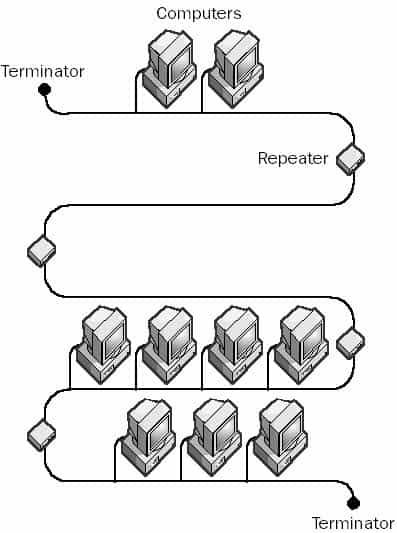Network design is governed by a set of rules and specifications that ensure efficient and reliable communication. Among these guiding principles, the 5-4-3 rule is a classic Ethernet network design constraint that remains a foundational concept for networking professionals.
Jump to:
- What Is the 5-4-3 Rule?
- How does the 5-4-3 Rule operate?
- Importance of Compliance with the 5-4-3 Rule
- The Role of the 5-4-3 Rule in Modern Networking
- Conclusion
- External Resources
1. What is the 5-4-3 rule?
The 5-4-3 rule pertains to the architecture of 10Base5 and 10Base2 Ethernet networks, often referred to as thicknet and thinnet, respectively. This rule outlines the limitations in network design to prevent signal degradation and maintain network integrity.

2. How does the 5-4-3 Rule operate?
Ethernet networks use electrical signals to transmit data, which weaken over distance and through each repeater they pass. The 5-4-3 rule is a set of constraints designed to mitigate signal attenuation and collision domain issues that arise in bus topology networks.
- 5 Segments Maximum: An Ethernet network can have up to five physical segments of coaxial cable.
- 4 Repeaters Only: These segments can be interconnected using a maximum of four repeaters.
- 3 Populated Segments: Out of these five segments, only three can have network devices (like computers and servers) attached.
The remaining two segments are relegated to inter-repeater links, serving solely to extend the reach of the network without hosting any devices.
3. Importance of Compliance with the 5-4-3 Rule
Adhering to the 5-4-3 rule is essential. Non-compliance can result in reflections and transmission errors, leading to data loss and network downtime. It is critical to maintain the rule to ensure that the network’s collision domain — the group of devices whose data collisions could interfere with each other — does not exceed acceptable limits, preserving the network’s efficacy and reliability.
4. The Role of the 5-4-3 Rule in Modern Networking
With the evolution of network technology and the advent of switching devices, the direct application of the 5-4-3 rule has diminished. However, the underlying principles of managing collision domains and signal integrity remain relevant in designing contemporary Ethernet networks, particularly in understanding the historical limitations that influenced modern advancements.
5. Conclusion: The Legacy of the 5-4-3 Rule
While technology has advanced beyond the constraints of the 5-4-3 rule, its principles have shaped the robust and scalable networks we rely on today. Understanding this rule is essential for grasping the evolution of network design and appreciating the modern capabilities of Ethernet technology.
For further reading on network topologies and design principles, refer to our extensive collection of articles and visual aids designed to enrich your networking knowledge.
6. External Resources
- IEEE 802.3 13. System considerations for multisegment 10 Mb/s baseband networks
- YouTube: Appling the 5-4-3 rule (Ethernet Repeaters)
- “Network Topology: The Physical and Logical Structure of a Network connection Between Model and nodes“, Engr. Wilson Kurt, 2019